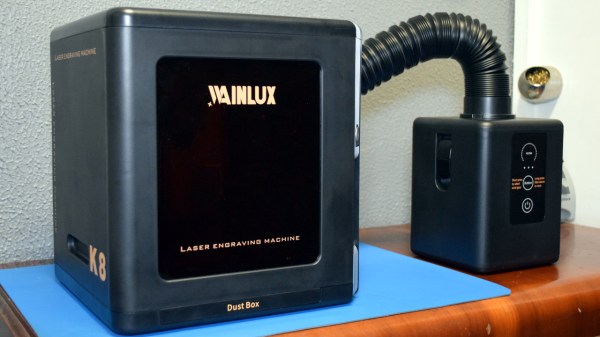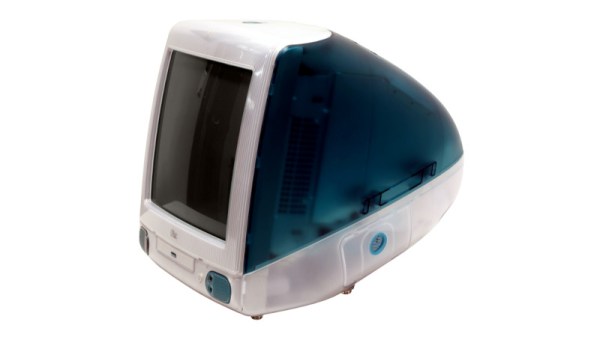Humanity has been harvesting energy from the wind for centuries. The practice goes back at least to 8th century Persia where the first known historical records of windmills came, but likely extends even further back than that. Compared to the vast history of using wind energy directly to do things like mill grain, pump water, saw wood, or produce fabrics, the production of electricity is still relatively new. Despite that, there are some intriguing ways of using wind to produce electricity. Due to the unpredictable nature of wind from moment to moment, using it to turn a large grid-tied generator is not as straightforward as it might seem. Let’s take a look at four types of wind turbine configurations and how each deal with sudden changes in wind speeds. Continue reading “Converting Wind To Electricity Or: The Doubly-Fed Induction Generator”
Featured3002 Articles
Longform articles, the best of what the Hackaday writing crew has to offer.
The 2003 Northeast Blackout And The Harsh Lessons Of Grid Failures
The grid failure in 2003 which reverted much of the eastern US and Canada back to a pre-electrification era may be rather memorable, yet it was not the first time that a national, or even international power grid failed. Nor is it likely that it will be the last. In August of 2023 we mark the 20th anniversary of this blackout which left many people without electricity for up to three days, while costing dozens of people their lives. This raises the question of what lessons we learned from this event since then.
Although damage to transmission lines and related infrastructure is a big cause of power outages – especially in countries where overhead wiring is the norm – the most serious blackouts involve the large-scale desynchronization of the grid, to the point where generators shutdown to protect themselves. Bringing the grid back from such a complete blackout can take hours to days, as sections of the grid are reconnected after a cascade scenario as seen with the 2003 blackout, or the rather similar 1965 blackout which affected nearly the same region.
With how much more modern society relies today on constant access to electrical power than it did twenty, let alone fifty-eight years ago, exactly how afraid should we be of another, possibly worse blackout?
Continue reading “The 2003 Northeast Blackout And The Harsh Lessons Of Grid Failures”
Review: WAINLUX K8, A Diode Laser That’s Ready To Work
Rarely a week goes by that some company doesn’t offer to send us their latest and greatest laser. You know the type — couple of aluminum extrusions, Class 4 diode flopping around in the breeze, and no enclosure to speak of unless you count the cardboard box they shipped it in. In other words, an accident waiting to happen. Such gracious invitations get sent to the trash without a second thought.
Now don’t get me wrong, I have no doubt that the average Hackaday reader would be able to render such a contraption (relatively) safe for use around the shop. Build a box around it, bolt on a powerful enough fan to suck the smoke out through the window, and you’ve turned a liability into a legitimate tool. But the fact remains that we simply can’t put our stamp on something that is designed with such a blatant disregard for basic safety principles.
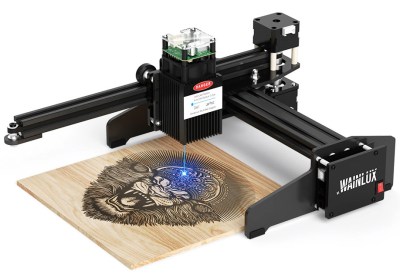
That being the case, a recent email from WAINLUX nearly met the same fate as all those other invitations. But even at a glance it was clear that this new machine they wanted to send out, the K8, was very different from others we’d seen. Different even from what the company themselves have put out to this point. This model was fully enclosed, had a built-in ventilation fan, an optional air filter “sidecar”, and yes, it would even turn off the laser if you opened the door while it was in operation. After reading through the promotional material they sent over, I had to admit, I was intrigued.
It seemed like I wasn’t the only one either; it was only a matter of days before the Kickstarter for the WAINLUX K8 rocketed to six figures. At the time of this writing, the total raised stands at just under $230,000 USD. There’s clearly a demand for this sort of desktop laser, the simplicity of using a diode over a laser tube is already appealing, but one that you could actually use in a home with kids or pets would be a game changer for many people.
But would the reality live up to the hype? I’ve spent the last couple of weeks putting a pre-production WAINLUX K8 through its paces, so let’s take a look and see if WAINLUX has a winner on their hands.
Continue reading “Review: WAINLUX K8, A Diode Laser That’s Ready To Work”
India Makes History With Chandrayaan-3 Landing
Yesterday, the Indian Space Research Organization’s (ISRO) Chandrayaan-3 spacecraft performed a powered soft-landing on the Moon, officially making India the fourth country to achieve a controlled descent to the lunar surface. Up to this point, only the United States, China, and the Soviet Union could boast successful landings on our nearest celestial neighbor.
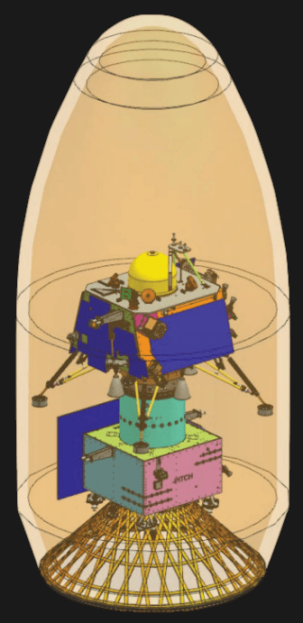
What’s more, Chandrayaan-3 has positioned itself closer to the Moon’s south pole than any other mission in history. This area is of great interest to scientists, as there is evidence that deep craters in the polar region contain considerable deposits of frozen water. At the same time, the polar highlands receive almost constant sunlight, making it the perfect location to install solar arrays. These factors make the Moon’s south pole an ideal candidate for a future human outpost, and Chandrayaan-3 is just one of several robotic craft that will explore this area in the coming years.
But as is usually the case with space exploration, the success of Chandrayaan-3 didn’t come easy, or quickly. The ISRO started the Chandrayaan program in 2003, and launched the Chandrayaan-1 mission in 2008. The craft successfully entered lunar orbit and surveyed the surface using a wide array of instruments, many of which were provided by foreign space agencies such as NASA and the ESA. In 2019 the far more ambitious Chandrayaan-2 mission was launched, which included a lander and small rover. While the orbiter component of Chandrayaan-2 was a complete success, the lander crashed into the Moon’s surface and was destroyed.
With Chandrayaan-3 now safely on the surface of the Moon, there’s much work to be done in the coming days. The planned mission lifetime for both the lander and rover is a single lunar day, which equals just about two weeks here on Earth. After that, the vehicles will be plunged into a long stretch of frigid darkness which they likely won’t survive.
Continue reading “India Makes History With Chandrayaan-3 Landing”
Sharkskin Coating Reduces Airliner Fuel Use, Emissions
The aviation industry is always seeking advancements to improve efficiency and reduce carbon emissions. The former is due to the never-ending quest for profit, while the latter helps airlines maintain their social license to operate. Less cynically, more efficient technologies are better for the environment, too.
One of the latest innovations in this space is a new sharkskin-like film applied to airliners to help cut drag. Inspired by nature itself, it’s a surface treatment technology that mimics the unique characteristics of sharkskin to enhance aircraft efficiency. Even better, it’s already in commercial service! Continue reading “Sharkskin Coating Reduces Airliner Fuel Use, Emissions”
Luna 25’s Demise: Raising Fundamental Questions About Russia’s Space Program
The recent news that Russia’s Luna 25 Moon lander had made an unexpected lithobraking detour into the Moon’s surface, rather than the expected soft touchdown was met by a variety of responses, ranging from dismay to outright glee, much of it on account of current geopolitical considerations. Yet politics aside, the failure of this mission casts another shadow on the prospects of Russia’s attempts to revive the Soviet space program after a string of failures, including its ill-fated Mars 96 and Fobos-Grunt Mars missions, the latter of which also destroyed China’s first Mars orbiter (Yinghuo-1) and ignited China’s independent Mars program.
To this day, only three nations have managed to land on the Moon in a controlled fashion: the US, China, and the Soviet Union. India may soon join this illustrious list if its Chandrayaan-3 mission’s Vikram lander dodges the many pitfalls of soft touchdowns on the Moon’s surface. While Roscosmos has already started internal investigation, it does cast significant doubt on the viability of the Russian Luna-Glob (‘Lunar Sphere’) lunar exploration program.
Will Russia manage to pick up where the Soviet Union left off in 1976 with the Luna 24 lunar sample return mission?
Continue reading “Luna 25’s Demise: Raising Fundamental Questions About Russia’s Space Program”
A Quarter Century Of The IMac
Growing older as an engineer turns out to be a succession of moments in which technologies and devices which you somehow still imagine to be cool or exciting, reveal themselves in fact to be obsolete, indeed, old. Such a moment comes today, with the25th anniversary of the most iconic of 1990s computers, Apple’s iMac. The translucent all-in-one machine was and remains more than simply yet another shiny Mac, it’s probably the single most influential home computer ever. A bold statement to be sure, but take a look at the computer you’re reading this on, indeed at all your electronic devices here in 2023, before you dismiss it.
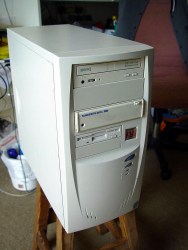
Computers in the 1990s were beige and boring. Breathtakingly so, a festival of the generic. If you had a PC it came in the same beige box as every single other PC, the only thing breaking the monotony being one of those LED 7-segment fake-MHz displays. Apple computers took the beige and ran with it, their PowerMac range being merely a smoother-fronted version of all those beige-box PCs. This was the period following the departure of Steve Jobs during which the company famously lost its way, and the Bondi blue Jonny Ive-designed iMac was the signature product of his triumphant return.
That’s enough pretending to have drunk the Apple Kool-Aid for one article, so why are we marking this anniversary? The answer lies not in the iMac’s hardware, though its 233MHz PowerPC G3 and ATI graphics driving a 15″ CRT were no slouch for the day, nor even in its forsaking of all their previous proprietary interfaces for USB. Instead it’s the design influence of this machine, as it ushered in a new era of technological devices whose ethos lay around how they might be used rather than in simply showering the interface with features. At the time the iMac spawned a brief fashion for translucent blue in everything from peripherals to steam irons, but in the quarter century since your devices have changed immeasurably in its wake. We still don’t like that weird round mouse though.
Header image: Rama, CC BY-SA 4.0.



